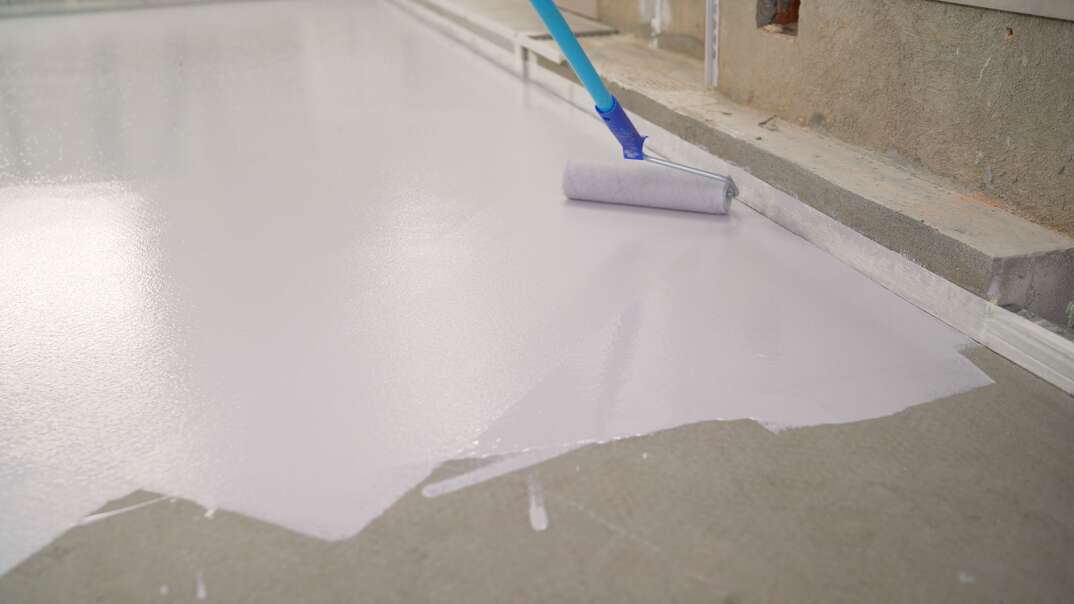How to Paint Your Garage Floor in 5 Simple Steps

Painting a Garage Floor at a Glance
- Step 1: Cover surrounding area
- Step 2: Start from edges
- Step 3: Apply first coat
- Step 4: Apply second coat
- Step 5: Leave to cure
One of the areas that often gets forgotten when planning home improvements is the garage. Painting your garage floor is a quick, inexpensive way to give the space a makeover.
This May Also Interest You: How to Epoxy a Garage Floor
However, because your garage floor goes through some pretty heavy wear and tear, it's important to know how to paint a garage floor correctly. Here's how to prep a garage floor and paint it with a roller.
What Kind of Paint Should You Use on a Garage Floor?
You've got two paint options: latex paint for concrete floors or one-part epoxy paint. Generally, using latex acrylic paint is the cheaper option.
However, one-part epoxy paint is the best choice for a lasting finish because it creates a more durable bond with the floor and is more resistant to mold and mildew. It's also less likely to chip than acrylic paint and resists stains that you're likely to have in your garage, like oil.
Whichever option you choose, make sure that the paint is designed for your floor type (most likely concrete) and that it's recommended for use in areas that typically see a lot of wear and tear.
How Do You Prep a Concrete Floor for Painting?
Before moving onto the instructions for how to paint a garage floor, it's important to prep your floor correctly to allow the paint to form a long-lasting bond. If you've recently laid the concrete, leave it to cure for at least a month before painting it.
First, use a cloth to wipe any spills from the concrete and then clean the floor thoroughly using a scrubbing brush. Once you've removed any dirt, apply a concrete cleaner and etcher to the surface and leave it to work for around 20 minutes. Etching the garage floor roughens the surface slightly and makes it easier for the paint to bond strongly to the concrete surface. Using a watering can with a spray nozzle is an effective and inexpensive way to ensure an even coating without forming large pools on the floor. Alternatively, you could use a spraying machine if you have one available.
Next, scrub the surface again using a brush and then rinse it thoroughly using a hose or pressure washer. Mop up any excess water and allow the floor to dry completely before priming it. Run your fingers over the concrete surface to check that it's the correct texture for painting. If it feels like sandpaper, it's ready for priming. Otherwise, repeat the etching process. You may need to etch the floor more than once if it's heavily stained.
Once your floor is dry, use a wide paintbrush to apply garage floor primer around the perimeter. You can then use a paint roller to prime the rest of the floor. Priming your floor before painting will improve the paint’s durability. As a rule, primer should dry for at least 8 hours, but you should defer to the drying instructions on the tin.
More Related Articles:
- Considering an Epoxy Garage Floor? You’ll Want to Read This First
- How to Clean Your Garage Floor
- Backed Up in the Garage? Here’s How to unclog Your Floor Drain
- How Much Does a Detached Garage Cost?
- How Much Value Does a New Garage Door Add to Your Home?
What’s the Best Way to Paint a Garage Floor?
Once you've finished the prep, use the following steps to achieve a smooth, durable result. Before you start painting, ensure that the garage is well ventilated. Consider wearing a mask to avoid inhaling any paint fumes.
Step 1: Cover the Surrounding Area
If you haven't already, cover anything near the area you're painting, such as the walls and garage door, with protective sheets. Apply masking tape around the bottom of the wall to ensure a sharp line.
Step 2: Start From the Edges
Use a wide brush to paint the corners and around the perimeter of the garage floor, taking care to apply the paint right up to the edges.
Step 3: Apply the First Coat
Using a paint roller, apply the acrylic or epoxy paint to the rest of the floor. Apply the paint in the same direction for the entire first coat and allow it to dry for the time stated in the manufacturer's instructions.
Step 4: Apply a Second Coat
Some garage floor paints can be applied as a single coat. Even so, it's usually a good idea to apply at least two coats to achieve maximum durability. While a single coat may look fine at first, it will be more prone to chips and scuffs over time.
Once the first coat is completely dry, use your paint roller to apply a second coat in the opposite direction to the first coat. Applying the paint in this way makes the floor more durable and ensures a smooth finish.
Step 5: Leave to Cure
Check the manufacturer's instructions to find out how long the paint needs to cure. Avoid walking or driving on the paint until the curing is complete. As a rule, it's best to wait for at least a day before walking on the floor and a week before driving a car into the garage.


